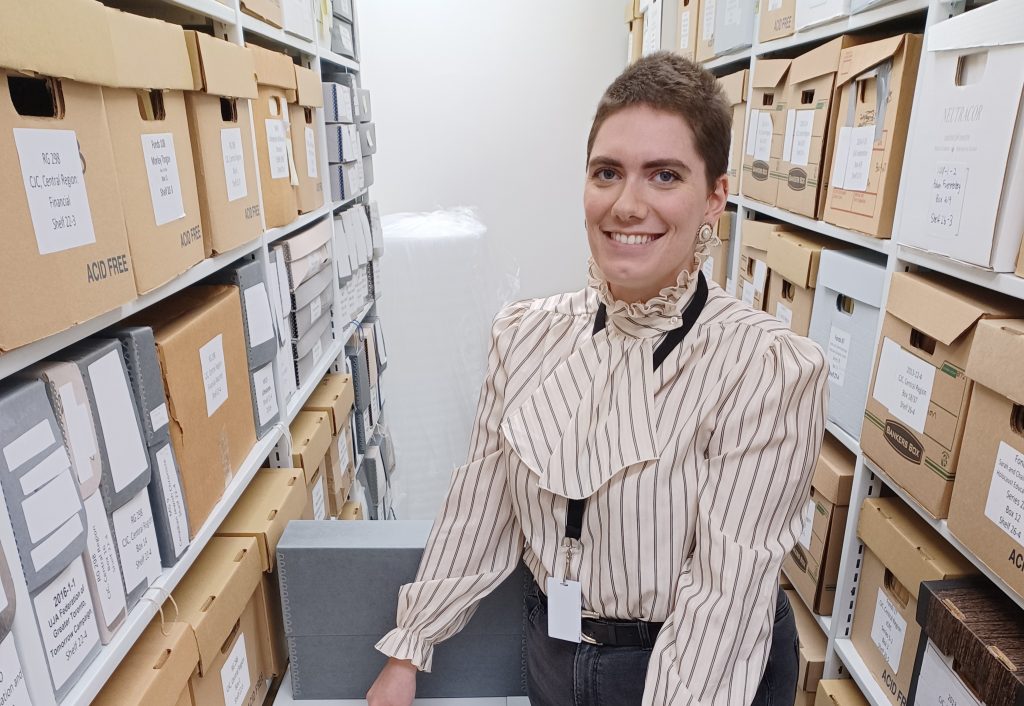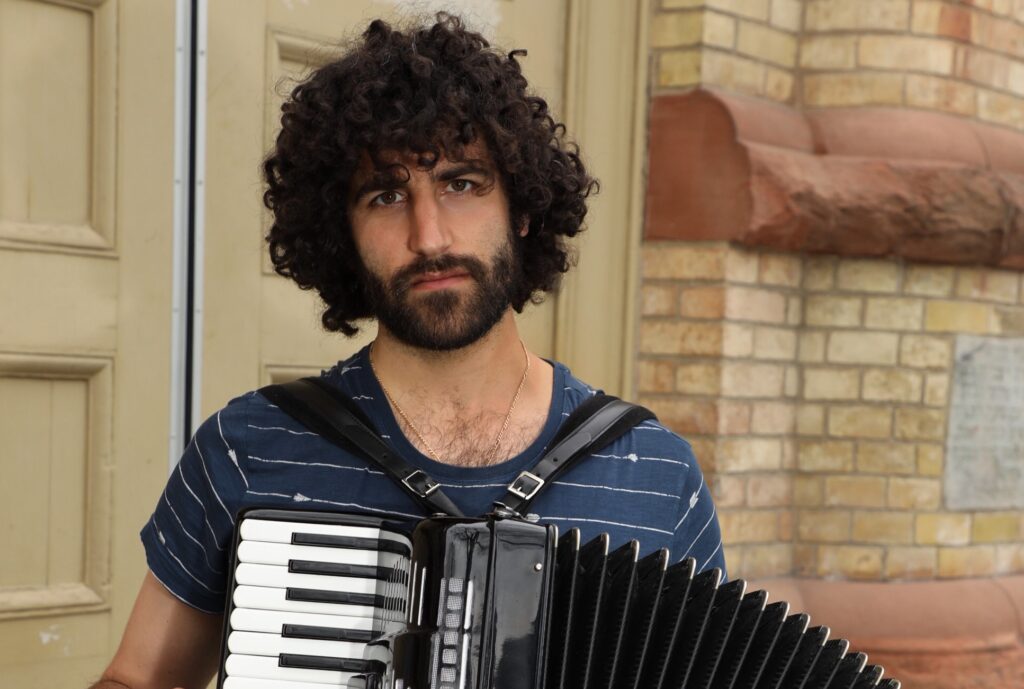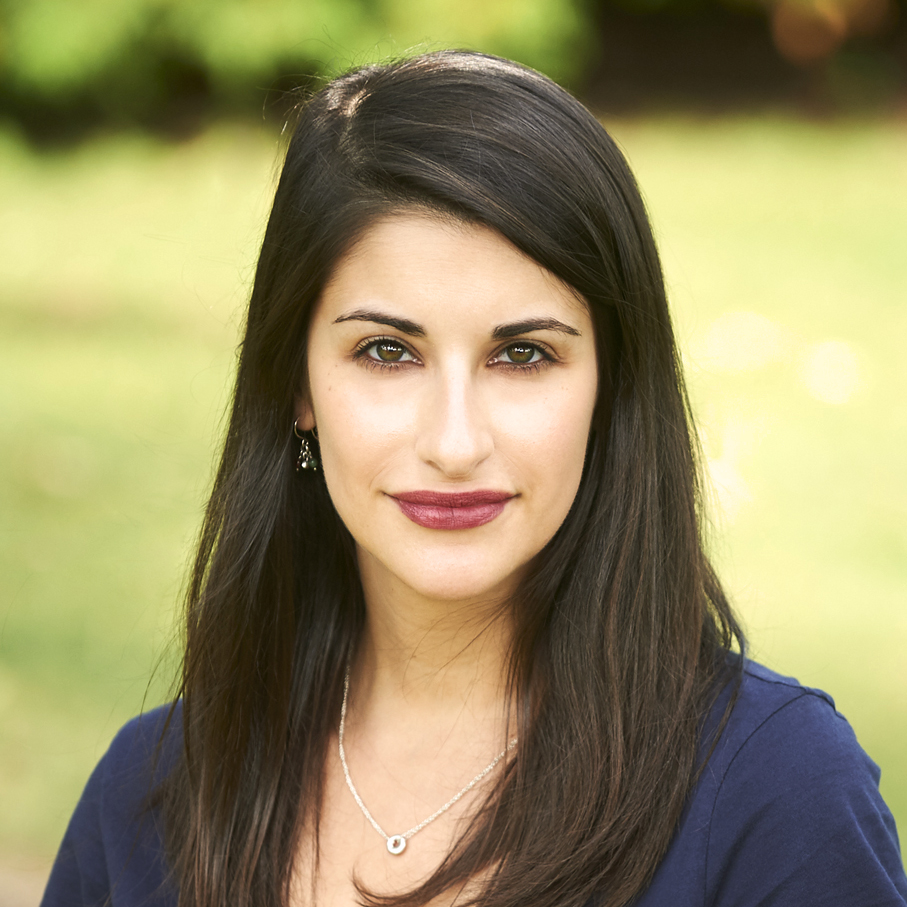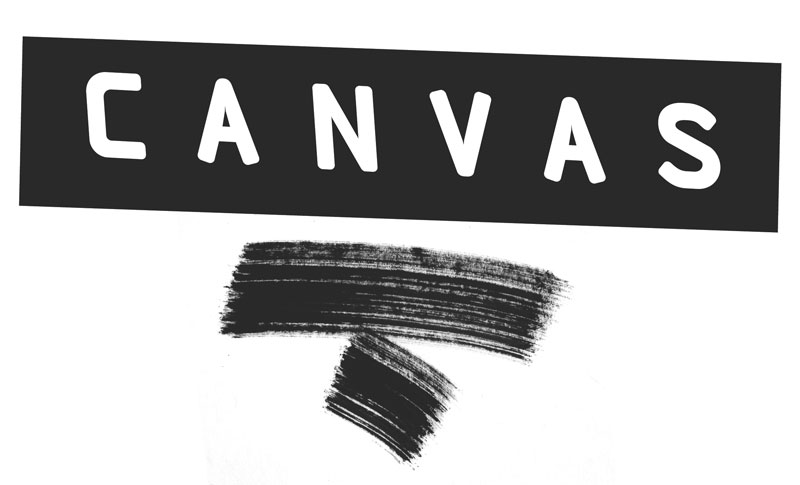Avi Margolis (they/she) is a Master of Museum Studies candidate at University of Toronto and is currently completing an internship at the Ontario Jewish Archives. Avi has always been passionate about the importance of material culture in helping people connect more deeply with the past and uses an experiential approach to examine the sensory importance of this contact point. This summer, they have been researching the history of Jewish immigration for the JIAS 100th Anniversary Exhibit, Love the Stranger. We asked Avi about their work at the OJA, sharing history on social media, and their love of sourdough baking.
Kultura Collective: Hi Avi. Can you tell us a bit about yourself, and your work as a researcher, and museum professional?
Avi Margolis: Starting off with the hardest question. I’m a current Master of Museum Studies (MMSt) student at University of Toronto and completed my undergrad in Anthropology at Toronto Metropolitan University. Both of those are interdisciplinary fields so I’ve spent a lot of time studying everything from existential philosophy to brain chemistry to neanderthal bones and the main thing I’ve learned is how much I enjoy learning. This internship has honestly been great for that. I went in knowing only the vaguest details of Jewish immigration and community services and I feel like I’ve uncovered a whole world underpinning our community. In my free time I dabble in some poetry and short fiction. I also love baking and playing games of both the video and board variety.
KC: What attracted you to the Ontario Jewish Archives when you were looking for an internship?
AM: I first heard about the OJA during my undergrad when they launched the Southern African Legacy Project. My parents being South African Jews and myself being an avid fan of history we naturally went to the launch event. I was intrigued by the interviews and demographic analysis involved in the project. It was my first exposure to oral history, a method where you sit down with an individual and record their life story and experiences. Oral histories are an important way to get in-depth and personal perspectives on history and are a major component in my work as a community focused historian. Traditional history is typically written by the dominant majority and the unique experiences of different people gets washed out. Oral histories are a way to bring these stories back into the light. It is also a big part of the exhibit I’m currently working on as part of my internship.
KC: Tell us about the project you are working on for JIAS (Jewish Immigrant Aid Services) in celebration of their Centennial.
AM: My project is to create an exhibition to supplement Refuge Canada Tent, a small, bilingual travelling exhibit created by the Canadian Museum of Immigration at Pier 21. It is designed to resemble a tent and is the same size as a typical shelter used in refugee camps today. My addition will go more in depth on Jewish immigrants and refugees and how JIAS has helped to welcome and settle them in Canada. I don’t want to give away the whole exhibit, but the gist of it is a series of standing banners which will describe JIAS’s work helping immigrants and refugees over its hundred-year existence. I’m hoping to highlight the personal narratives of immigrants who went on to work at JIAS since one of their mottos is “Immigrants established JIAS so JIAS could establish immigrants.” The exhibit will include fragments of the OJA’s oral histories, sharing people’s stories in their own words alongside the text of the banners.
KC: What is the most interesting record you have discovered during your research?
AM: I would say the most interesting record for me was a photo of the 1925 Officers of the Palestine Lodge. A lodge in this context refers to a group of Freemasons. Not to get too into the conspiracy of it all, but uncovering a secret society feels like a pretty big deal for me. I also found a few more photos as well as meeting notices and event invitations for the Palestine Lodge in several of the OJA’s Fonds.

KC: Your research will culminate in Love the Stranger, an exhibition celebrating Jewish immigration stories, to supplement Pier 21’s travelling exhibition Refuge Canada Tent, displayed at Holy Blossom Temple in September 2022. What do you hope visitors take away from the experience?
AM: Talking about immigration and refugees can really shine a light on some of the worst parts of history, such as the Holocaust and the Syrian refugee crisis. At the same time, you see the best in the people who chose to fight back. There’s a Mr. Roger’s quote that really encapsulates it, “Always look for the helpers. There’s always someone who is trying to help.” My hope is that visitors come away with knowledge of these immigration issues and the motivation to act. I hope to highlight the power people have to do good even in times of crisis and inspire people to get involved with JIAS and other charitable organizations.
KC: You have also been adding to the OJA’s social media account, sharing some of your research for the JIAS 100th Anniversary Exhibition. What role can social media play in sharing stories and history?
AM: It’s kind of funny, a lot of people imagine archivists as document hoarders who would hate technology but it’s actually the complete opposite. Internally, archives are always working to digitize their collections as extra insurance from the dangers that time and age pose to records. Similarly, social media has become a huge part of outreach work across museums and archives. We live in a digital world! People get their news from their phones, and we need to keep up with that. Social media, particularly Instagram, is the perfect opportunity to highlight little snapshots of archival photos or documents.
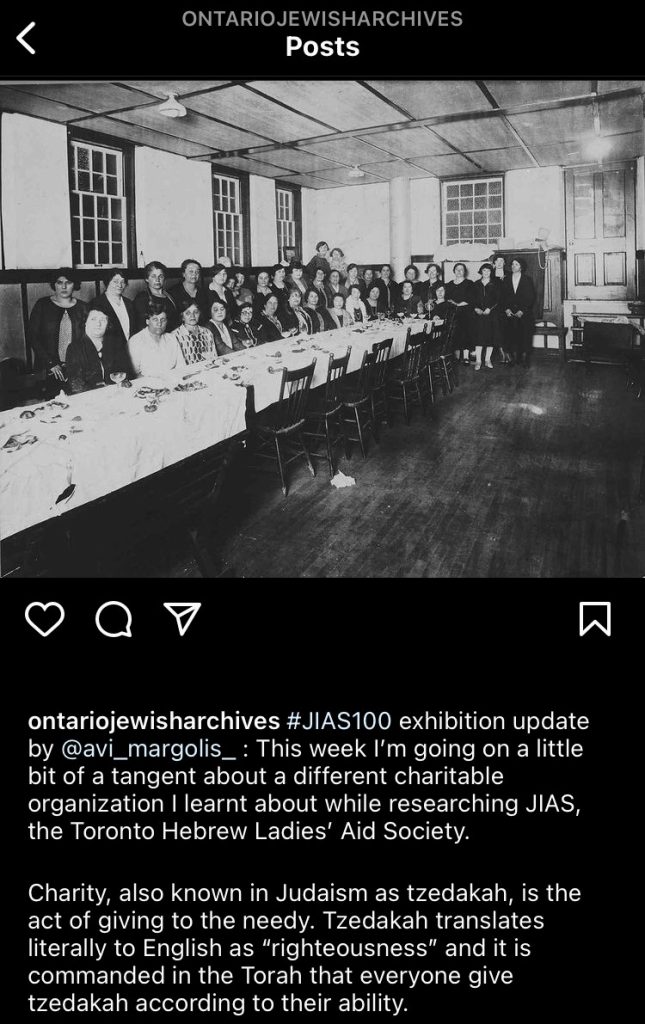
KC: What has been the most exciting thing about working at the OJA thus far? What have you learned while working on site?
AM: To be honest, archival research can get boring at times, you spend a lot of time sifting through files in search of something good. But once you find that something, it’s so worth it! Archival research always inspires me to go down rabbit holes of research. My first archival school project involved studying the buildings on a street corner and I slowly uncovered the life of a childless sailor who had once lived there and passed his home on to a young couple who supported him in his old age. The first mystery I found in the OJA was the origins of JIAS, which I made a social media post summarizing. Essentially, conflicting records listed JIAS’s founding date as anywhere between 1919 and 1926 because it began as many small groups of volunteers with different names in different cities. Over time these groups unified into JIAS. The founding date of August 30, 1922 is based on the date that JIAS was legally incorporated as a charity. I also learned that the connection between JIAS and Holy Blossom Temple goes all the way back to JIAS Toronto’s origins since Rabbi Barnett Brickner from Holy Blossom led Toronto’s precursor to JIAS, the Emergency Jewish Immigrant Aid Committee, until he moved to the United States and passed the position on to Dr. Abraham Brodey, a member of the congregation.
Working on site has given me a whole new perspective on handling heritage! Archival records are often old and include crumbling papers, which require delicate handling. For especially damaged and at-risk records, archivists will create an “access copy” for researchers to use without needing to touch (and potentially damage) the original but doing this to every item in an archive would be way too time-consuming. Most stable originals are available for researchers and archivists to handle with proper precautions, such as clean dry hands for paper and gloves for photographs.
KC: Is there a particular image or record in the vast collection you want to share?
KC: I hope it’s not too boring if I share a piece of text. A few weeks ago, I found the introduction to an article about JIAS’s programs to help Jews escaping the Soviet Union in the 1970s and it’s stuck with me ever since. It evocatively describes the waiting room of new arrivals, coming full circle to how over time they will learn to read English and appreciate the meaning of the sign. Some of them may even go on to work at JIAS themselves, and so the cycle continues. I really love this idea of charitable work and kindness as this cosmic “pay-it-forward” connecting people across time and space.
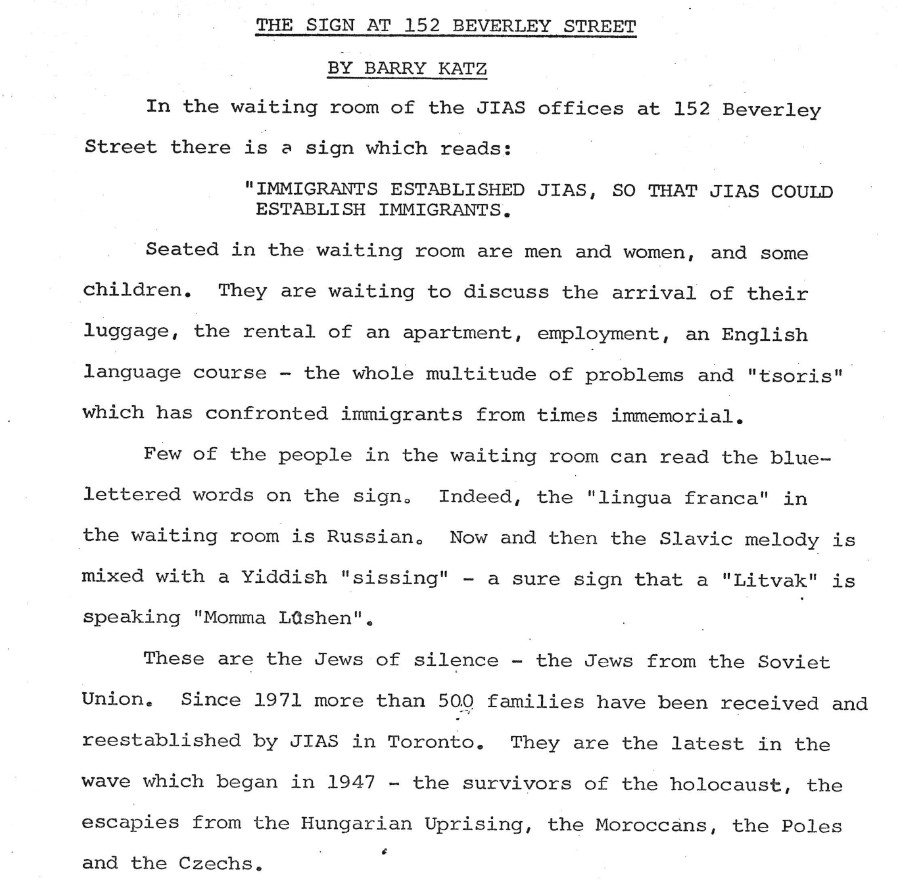
KC: You are completing your Master of Museum Studies at the University of Toronto. What would you like to pursue after graduation?
AM: Oh, that’s a tough question. I’m lucky enough to truly be studying what I love and there’s so many parts of it that I genuinely enjoy. I’d be happy working in exhibit curation, museum education, or collections management. I think my real goal is to make sure doing work where I’m connected to the community, so I would prefer to work in a smaller local museum rather than a large world history museum. Not to say that the two are mutually exclusive, the city’s Toronto History Museums are incredibly community focused. Projects like Awakenings or the Dashmaawaan Bemaadzinjin Indigenous Food Market at Fort York are innovative programs within the museum field and represent the type of work I hope to do.
KC: You are an avid sourdough baker. How did you get into baking? Tell us about your sourdough starter!
AM: I’ve always been a huge fan of baking (and the resulting baked goods). One of my earliest memories is decorating Channukah cookies with my family. I started doing more of my own baking back in high school, often stress baking before exams. At first, I made simpler things like cookies or muffins. One evening I went to my aunt’s home for Shabbat dinner, and she served the most delicious homemade challah. She was kind enough to share her recipe with me and I began making challah every Friday as part of my Shabbat ritual. I slowly became more comfortable with yeast breads and decided I wanted to get weirder. This was around 2019, and little did I know the perfect incentive was about to arrive. I started my sourdough (his name is Jimothy, which was a joke I made to try and avoid getting attached since I didn’t expect him to survive) in April of 2020, shortly after the pandemic hit. And he is still making bread to this day!
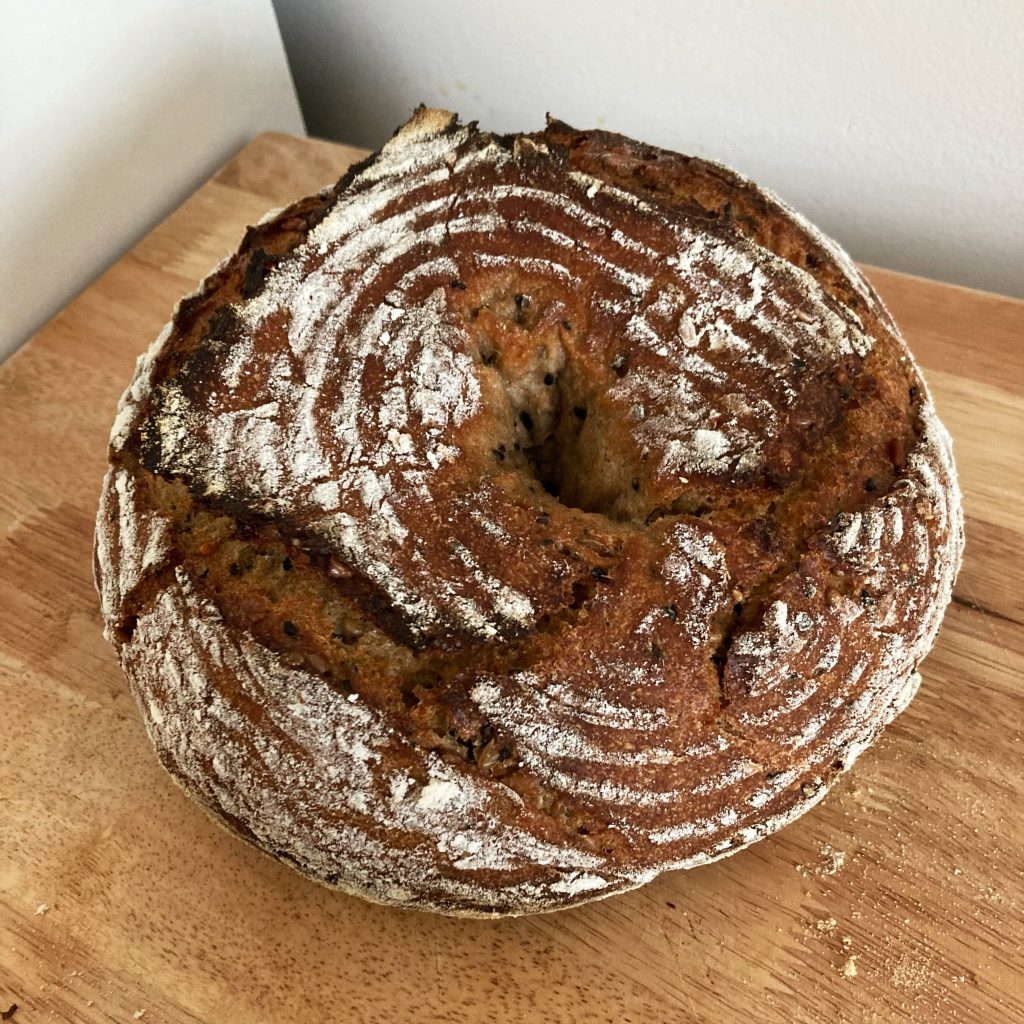
KC: A question about your Jewish inspirations. Who/what is inspiring you in Toronto right now?
AM: I am constantly inspired by the beautiful queer Jewish community in Toronto. There is a thriving culture of some of the bravest people I know reconciling with a religion and sexuality that are sometimes seen as incompatible. There are too many to name, but they have guided me on a journey to reconnect with Judaism on my own (unabashedly queer) terms.
KC: Who are your creative Jewish role models?
AM: It’s a bit of a deep cut but I would say Hannah Arendt. As a philosopher who wrote about fascism and totalitarianism after surviving the Holocaust, she offers such concise analysis on the roots of hate and how they were fanned into a flame. I also love the way she describes freedom. Her philosophy that freedom is both a fundamental right and something which must be actively chosen speaks to the complexity of protecting human rights in the face of great evil. I also find her unfortunately relevant today, with rising fascism and neo-Nazi hate groups becoming more and more common.
KC: Lightning round question!
- Applesauce vs sour cream? Applesauce
- Raisin vs plain challah? Plain (unless you’re using it for French toast)
- Poppy seed vs prune Hamantaschen? Poppy seed all the way. (I actually learnt how to make my own poppy seed filling last Purim)

Avi Margolis (they/she) is a Master of Museum Studies candidate at University of Toronto. They completed their undergraduate degree in Anthropology at Toronto Metropolitan University. Avi has always been passionate about the importance of material culture in helping people connect more deeply with the past and uses an experiential approach to examine the sensory importance of this contact point. Their work is focused on making museums more accessible to the public, both physically and psychologically. They are a queer author who strongly believes in sharing history through an insider and community-focused lens. Avi is especially interested in researching the philosophy and pedagogy behind museums. They bring an ethnographic framework of observation to study how museums succeed or fail to connect with visitors.
Learn more about Avi at:
- @avi_margolis_ twitter.com/avi_margolis
- @avi_margolis_ instagram.com/avi_margolis_
The JIAS 100th Anniversary Exhibit, Love the Stranger, uses primary sources including letters, pamphlets, news reports, photos, and oral histories from the Ontario Jewish Archives to tell the story of a century of Jewish immigration. Refuge Canada Tent is a travelling exhibit created by the Canadian Museum of Immigration at Pier 21 and is supported by TD Bank Group. The exhibits open this fall at Holy Blossom Temple. See https://jiastoronto.org/100th/ for more details.
The Ontario Jewish Archives, Blankenstein Family Heritage Centre (OJA) is the largest repository of Jewish life in Canada. Founded in 1973, the OJA, a department of UJA Federation of Greater Toronto, acquires, preserves and makes accessible the records that chronicle our province’s Jewish history. The collection documents organizations, individuals, synagogues, schools, summer camps, leisure, athletes, and businesses. There are many different ways to explore the OJA’s collection and learn about the province’s Jewish past. You can make an appointment to look at photographs, films, Yiddish newspapers, hand-written correspondence, and even an original Superman drawing! Through exhibitions, programs, research assistance, and walking tours, the OJA tells the stories of Ontario’s Jewish community.
Learn more about the Ontario Jewish Archives:
- @ontariojewisharchives https://www.instagram.com/ontariojewisharchives/
- @OntarioJewishArchives https://www.facebook.com/OntarioJewishArchives/
JIAS Toronto is a Jewish agency that upholds Canada’s commitment to embracing immigrants and refugees. All newcomers should be warmly welcomed, well serviced, and connected to communities. They have the right to be safe, treated with dignity and respect, and valued for their traditions, cultures, achievements, and aspirations. We believe that newcomers should be provided with the choices and opportunities that will empower them towards self-reliance.
Learn more about JIAS:
- @jias_toronto https://www.instagram.com/jias_toronto/
- @JIASToronto https://www.facebook.com/JIASToronto
The Canadian Museum of Immigration at Pier 21 is Canada’s sixth national museum. Our mission is to share the ongoing story of immigration to Canada—past to present and coast to coast to coast. From immigration terminal to national historic site to national museum of immigration, our own story of becoming has its twists and turns. Journeys of courage, hope, hardship and resiliency are at the heart of the immigrant experience. Understanding these journeys helps us understand ourselves and our country. Our exhibitions are rich with first-person accounts, intimate oral histories, archival photographs, artifacts and immersive experiences. We explore themes of journey, arrival, belonging and contributions situated within larger historical, political and social contexts.
Learn more about Pier 21:
- @pier21_quai21 https://www.instagram.com/pier21_quai21/
- @Pier21 https://twitter.com/pier21 @CanadianMuseumofImmigration https://www.facebook.com/CanadianMuseumofImmigration

